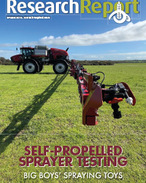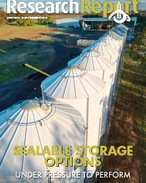This article is 7 years old. Images might not display.
The publication will make sorting and identifying the thousands of tephritid ‘true’ fruit flies affecting a wide variety of crops grown in Australia much easier.
The handbook is accompanied by additional online information, developed via the companion website Fruit Fly Identification Australia (fruitflyidentification.org.au) and is a handy reference for all primary producers, not just those producing commercial quantities of fruit.
The leader of the research project that produced these resources, which was supported by the Plant Biosecurity Cooperative Research Centre, is Dr Mark Schutze, formerly of the Queensland University of Technology (QUT) but now at the Queensland Department of Agriculture and Fisheries (Qld DAF).
“We’ve updated all the fruit fly images using fresh material and produced new, tailor made, molecular diagnostic tools that have emerged from our investment in next generation genomic research,” Dr Schutze said.
Over 60 target species of fruit flies are included in the handbook and website, shown both as individual flies and in groups of flies that look similar to each other. Importantly, the range of variation within species is also captured.
“Fruit flies are incredibly variable in their colour patterns. We’ve done everything we can to represent as much variation as possible in the new version, as well as showing what flies look like when they’ve been preserved using a range of different techniques,” Dr Schutze said.
The research project, website, and handbook were developed in partnership with the Qld DAF, the Western Australia Department of Primary Industries and Regional Development, and Plant Health Australia (PHA), who led the website and handbook development.
Nick Woods, PHA’s manager, National Strategies & Policy Coordination, said that maps showing where the flies are currently found in the world are included.
“Looking at the maps, researchers can immediately tell if the sample they are looking at is usually found in Australia, whether it is regarded as a pest or non-pest, or if it is an exotic species that is new to the country,” Woods said.
“The website contains an expanded selection of high definition images as well as an updated description of the latest DNA techniques and protocols used to identify fruit flies.”
The high-resolution images were taken at QUT under standardised light conditions and ‘stacked’ to produce completely in-focus images, so that comparisons can be made between species and flies can be correctly identified by what they look like.
Find the Australian Handbook for the Identification of Fruit Flies at http://fruitflyidentification.org.au























